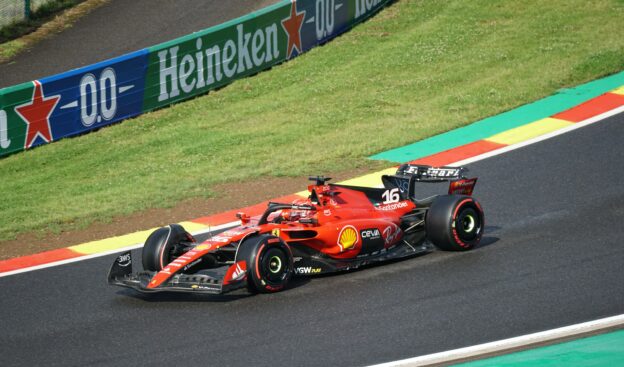Navigating the High-Speed Gambit: Risk and Reward Dynamics in F1 Racing

Racing F1 cars at speeds of over 200 mph on tight and twisty circuits is a challenge. Especially when you add the unpredictable weather conditions, it creates a world filled with split-second decisions for the drivers. The very nature of F1 racing balances around risk and reward, just like many other domains in life.
Risk and Reward
Formula 1, being the pinnacle of motorsport, demands not only driving excellence but also an inherent ability to judge when to push the limits and when to be cautious . Every overtaking move, tire change or decision to push hard on a particular lap embodies the trade-off between risk and reward.
It's no secret that the most successful drivers in F1 history have mastered this delicate balance. Think about legends like Ayrton Senna or Michael Schumacher. They were known not just for their speed, but for their uncanny ability to assess situations and make risk-informed decisions that often paid off.
Strategy of No-Deposit Betting
The balance between risk and reward is crucial in F1 race strategy. Experts in games of chance at Casino Alpha use some interesting connections to explain this better. They show how F1 racing's risk and reward resemble the risk management in gambling with no deposit offers. Just like how F1 drivers take calculated risks for victory, players in no-deposit gambling face a similar risk-reward setup, playing without their own money to win. In both cases, the attraction of potential rewards captures the human desire for triumph and excitement. The connection between F1 racing and no-deposit gambling reveals the common foundation of calculated risks and promising rewards that drive people to participate in both activities.
Data-Driven Decisions
In the old days gut instincts played a big role, but modern F1 heavily relies on data to inform strategy decisions. A study discussed the use of reinforcement learning for F1 race strategy. Such advanced techniques allow teams to predict the outcome of their strategies based on real-time data, ensuring that risks taken have a higher probability of yielding rewards. In a way, F1 teams are reducing the gamble and making informed bets, similar to expert gamblers studying odds meticulously.
Common sense
Although teams are using special software and many engineers nowadays, you can still see they get it wrong sometimes. Sometimes drivers get fitted wet tyres while it's dry outside, just because the teams is data driven and not using the always very powerful common sense. This common sense is also very important for drivers, but it takes a lot of skill and brainpower to be able to think inside a car going that fast around a track. Only the greats are able to really think and race at the same time.
To Risk or Not?
If you’re reading this, you’ve probably felt the allure of adrenaline-pumping activities at some point in your life. The reason why F1 attracts millions is the constant race between safety and daring. While every lap has its dangers, it's the audacity to face them head-on that separates winners from participants. This dynamic resonates with many aspects of life, from business investments to deciding on an aggressive move in a board game.
In Conclusion
The world of Formula 1 is more than just racing cars; it's a real-life manifestation of the ever-present dynamics of risk and reward. Like gamblers weighing the pros and cons of their bets. F1 drivers and their teams are always calculating, always strategizing and always on the edge of their seat to take the right decision on the right moment and using everything technology available to them.
Now that you've dived deep into the intricate connection between F1 racing and risk-taking, don't be afraid to explore other arenas where this balance plays a crucial role. And perhaps, you might see the next F1 race through a slightly different lens.
✅ Check out more posts with related topics:













LAST 3 F1 Fan COMMENTS